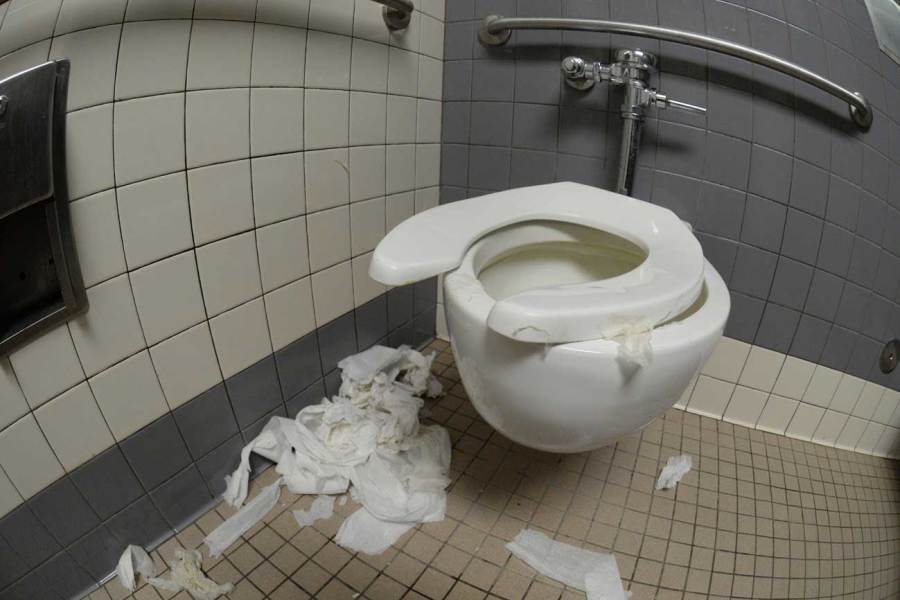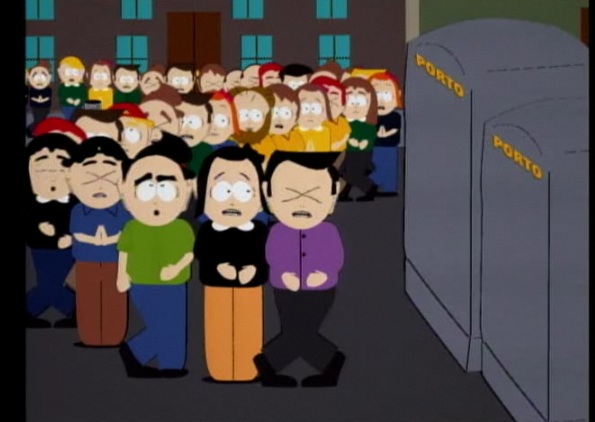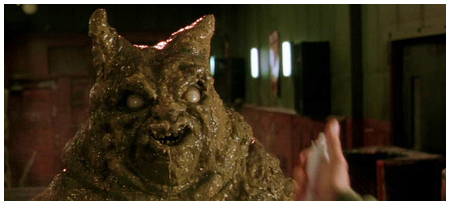Ask a bunch of people about their bathroom habits and you get a bunch of answers. Maybe there’s some truth to the self-reported behaviors. Bradley Corporation the commercial washroom people report in a non-peer-reviewed survey that folks in the U.S. don’t always wash their hands (not new) that women self-report handwashing compliance rates higher then men (seen in observation studies) and there’s a lot of texting/Facebooking/Snapchatting in the stalls (sometimes in a creepy way).
The Healthy Hand Washing Survey queried 1,062 American adults online Dec. 10-13, 2015 about their hand washing habits in public restrooms and concerns about germs, colds and the flu. Participants were from around the country, were 18 years and older, and were fairly evenly split between men and women (47 and 53 percent).
Some gems:
Americans take cell phone breaks in restroom stalls.
Using cell phones in restroom stalls is not off limits for the majority of Americans. Texting, checking/sending email, checking/posting on social media and surfing the web are the most common activities. Surprisingly, six percent of all survey respondents admit they’ve taken a photo in the stall while eight percent of men say they’ve checked their fantasy sports league.
They skip the suds….especially men.
While consumers look to businesses to improve their restroom cleanliness, they have room for improvement when it comes to washing their hands in these locations. Almost 80 percent say they frequently or occasionally see others leave a public restroom without washing their hands, especially in the men’s room. Men also admit they are less likely to wash up than women – 20 percent disclosed they skip washing because they “didn’t feel the need.”
They identify facility issues that get in the way of washing hands (there may be some bias in here, with a survey coming from a facilities company -ben)
Of those who acknowledge not washing their hands, most say there was a lack of resources in the wash area – no soap or paper towels. They also blame the sinks, which were either not working or simply appeared too unclean to use.
They think poorly of businesses with dirty restrooms.
An unclean restroom tarnishes the image of a business in consumers’ minds. Most Americans say that a messy restroom signifies poor management and shows the business doesn’t care about its appearance or its customers.
Clean restrooms don’t mean safe food.


 But what about on cruise ships?
But what about on cruise ships? And when we’re all in the same hotel room, and I wake up early to do some writing, I’ll go to the bathroom, shut the door and blog away.
And when we’re all in the same hotel room, and I wake up early to do some writing, I’ll go to the bathroom, shut the door and blog away..jpg)
 A woman claims she just wanted to take care of some toilet business during a lunch at Puck’s most famous Beverly Hills restaurant, Spago back in 2007. But according to the lawsuit, filed in L.A. County Superior Court, the bathroom floor was covered in "standing pools of urine and feces" — and the only usable toilet didn’t have a lock on the door.
A woman claims she just wanted to take care of some toilet business during a lunch at Puck’s most famous Beverly Hills restaurant, Spago back in 2007. But according to the lawsuit, filed in L.A. County Superior Court, the bathroom floor was covered in "standing pools of urine and feces" — and the only usable toilet didn’t have a lock on the door.
 But are restrooms really indicative of restaurant cleanliness?
But are restrooms really indicative of restaurant cleanliness? He went into a stall while continuing to eat his apple.
He went into a stall while continuing to eat his apple. Almost all the diapers were cloth; at least for the first two children. Then, after too many green apple splatters seeping through, migrated to the seemingly more absorbent disposable diaper.
Almost all the diapers were cloth; at least for the first two children. Then, after too many green apple splatters seeping through, migrated to the seemingly more absorbent disposable diaper. "We are a very family friendly company and would never encourage any policy that does not take individual facts and circumstances into account,” he wrote.
"We are a very family friendly company and would never encourage any policy that does not take individual facts and circumstances into account,” he wrote. Michelle just returned from two weeks in Japan. I asked her to take some pictures of Japanese hand washing facilities and the like. In her own words,
Michelle just returned from two weeks in Japan. I asked her to take some pictures of Japanese hand washing facilities and the like. In her own words,